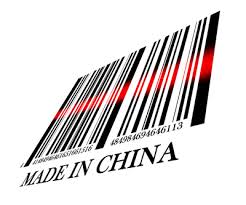New Importers – Tips to Better Control Your China Supply Chain
May 5, 2017

You’ve got a great a new product. And you have never sourced direct from China factories. And you need the competitive advantage of China’s low costs for mass production. Taking that first step can seem a little daunting. The sheer distance to the other side of the world, the time difference, the culture gap, the language barrier, all this can give you pause. Sure, logic dictates that there is not much to it, after all so many companies have done this for years. But it does not take long to discover horror stories from even the savviest of importers. Being worried is being smart when it comes to your China supply chain.
Over the years, we have helped importers source in China and develop their China supply chains for a broad variety of products, from textiles to chemicals, from toys to machine parts, from electronics to jewelry. And we found that most importers avoid pitfalls by focusing on the right processes, no matter what the product. Below, we found, are some of the common steps often overlooked when first sourcing from China.
Sampling and initial quality
You’re eager to have your product mass produced. You have your specification sheets and all the details written down. It should be enough, right? However, defining your mission and specification is only step 1. You need to also confirm you have chosen the right Do they understand your needs? Are they qualified? Are they enthusiastic? One good way to confirm this is to inspect the quality of their samples, and confirm that the quality process that made the products is robust and repeatable. A good China supply chain depends on the ability to repeat and scale orders.
Social Responsibility
You hear about this in the newspapers, or in the news even – An explosion has occurred, a factory has collapsed, a lake has been polluted all due to unsafe and irresponsible factory management. If this happened to you it could damage your reputation and you could lose clients. A good supply chain is a well-managed and socially responsible one. So avoid the drama by carefully checking who your suppliers are, by inspecting the working conditions, and by performing factory and environmental audits. Consider this a long-term investment.
Intellectual Property (IP) protection
China has an unfortunate reputation for producing counterfeit products and for copying good ideas. Although progress is being made on this front, it pays to take steps to avoid problems by registering your trademarks, copyrights, patents, etc. in China. Skipping this step means that your IP has no official protection in China – which means its up for grabs. You may also want to take additional technical steps to protect your IP, you corporate IP strategy should be clear to your China supply chain management team, so they can help you enforce it.
Customs clearance
Your product has shipped! But due to missing paperwork, it is stuck in customs awaiting release – accruing demurrage fees daily. What do you do? You want to make sure that you have all the proper documentation – certificates and invoices from the factory – in order to get your product to your warehouse without delay. Accruing fees, on top of taxes and duties, along with late deliveries can wreak havoc on a new importer’s bottom line. Prepare yourself – know what the requirements are for your product, and ensure that all the certifications are there.
Does this make sense to you? What are some of the steps you over-looked when you first started your China supply chain? What were some of the lessons learned? Share your thoughts with us in the comments below.
By Jocelyn Trigueros
